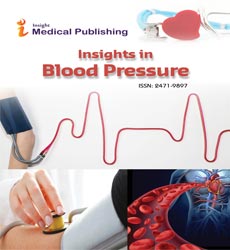Abstract
World cancer 2018: Screening for lung cancer has limited effectiveness globally and distracts from much needed efforts to reduce critical levels of worldwide prevalence of smoking
Lung cancer is responsible for 27% of all cancer deaths and is the leading cause of death from anymalignancy in both sexes. The American Cancer Society estimated 224,390 new cases in the United States in 2016.And an estimated 158,080 individuals will die of lung cancer itself. Worldwide 1.8 million new cases of lung cancer were diagnosed in 2012. Hence screening strategies for early detection of lung cancer have been considered important. Results of the National Lung Screening Trial showed a 20.3% improvement in mortality through early detection using low dose computerized tomography. However reduction in all-cause mortality was only 6.7%. Also numbers needed to screen remain impractical and costs prohibitive, being nearly $615,000 per QALY gained. Incorporation of other clinical and molecular data is still unlikely to make screening cost effective. Even otherwise generalizability is limited as more than 90% of the study population was represented by Caucasians. Smoking is also directly implicated with morbidity and mortality from diseases other than lung cancer. And worldwide over 6 million people die every year from smoking related illnesses including lung cancer. The CDC estimates indirect costs at nearly $97 Billion from productivity losses, $96 Billion in avoidable healthcare expenses and$2 Billion in pregnancy complications. The findings in this paper support changes in public policy as well as use of social influence models to reduce smokingprevalence. Policy changes include increased taxation and changing the legal age for cigarette consumption. Age is important because the greater the age of initial smoking, lesser the likelihood for long term use. Social influence models can augment these efforts by reducing uptake of smoking by 35-40%. These changes are especially important considering the estimate by the WHO that new cases of cancers are expected to increase worldwide by 70% over the next 20 years. Low-portion CT lung malignant growth screening (LCS) and smoking suspension could be viewed as the fundamental two weapons against the evil impacts of tobacco utilize that proceeds on a worldwide level, in spite of forceful enemy of smoking efforts. As per the World Health Organization (WHO), in 2015, over 1.1 billion individuals smoked tobacco, and in spite of the fact that that number is declining worldwide and in numerous nations, the predominance of tobacco smoking has all the earmarks of being expanding in the WHO eastern Mediterranean locale and the African area.
In a perfect world, an equivalent measure of assets - time, cash, social insurance ability - could be committed to screening and discontinuance. Be that as it may, in reality, troublesome decisions must be made, prompting the inquiry: Does one methodology have more an incentive than the other with regards to managing a genuine hit to tobacco use and lung malignant growth frequency?
Lung Cancer Screening: A Distraction?
His group stated that smoking-cessation programs are more cost effective in reducing lung cancer mortality than low-dose CT (LDCT) LCS programs are, particularly in medium- and low-income countries where the prevalence of smoking is high and worsening: Continued attempts to reduce the prevalence of smoking are more likely to produce greater mortality reductions than lung cancer screening strategies.
Using National Lung Screening Trial (NLST) data, the team determined that it would require 320 patient screenings to prevent one death from lung cancer. If an LDCT scan is $500, the cost will be $480,000 to prevent this one death. On the other hand, smoking-cessation programs, such as that implemented by the Washington State Tobacco Prevention and Control program, demonstrate that for every dollar spent, $5 was saved in healthcare costs. "LDCT imaging comes at prohibitive costs because of the high number needed to screen, as well as inadequate biopsy yields from screen-positive cases."
Given a finite pool of healthcare resources, as alternative measures such as education, taxation, and changing the legal age for smoking from age 18 to 21 are more likely to have profound cost-effective improvements in morbidity and mortality due to smoking than LDCT LCS does, especially in developing countries. Despite evidence that smoking-prevention and-cessation programs are cost effective and reduce lung cancer mortality, these types of preventive measures continue to be neglected, while LDCT LCS has been disproportionately promoted, the authors stated. It is unlikely that the number of labor years lost will be improved by transferring scarce economic resources to lung cancer screening without first reducing the global burden of smoking and all smoking-attributable diseases, particularly in developing countries.
Author(s):
CherianVerghese,
Abstract | PDF
Share this

Google scholar citation report
Citations : 71
Insights in Blood Pressure received 71 citations as per google scholar report
Abstracted/Indexed in
- Google Scholar
- China National Knowledge Infrastructure (CNKI)
- Directory of Research Journal Indexing (DRJI)
- WorldCat
- Secret Search Engine Labs
Open Access Journals
- Aquaculture & Veterinary Science
- Chemistry & Chemical Sciences
- Clinical Sciences
- Engineering
- General Science
- Genetics & Molecular Biology
- Health Care & Nursing
- Immunology & Microbiology
- Materials Science
- Mathematics & Physics
- Medical Sciences
- Neurology & Psychiatry
- Oncology & Cancer Science
- Pharmaceutical Sciences
